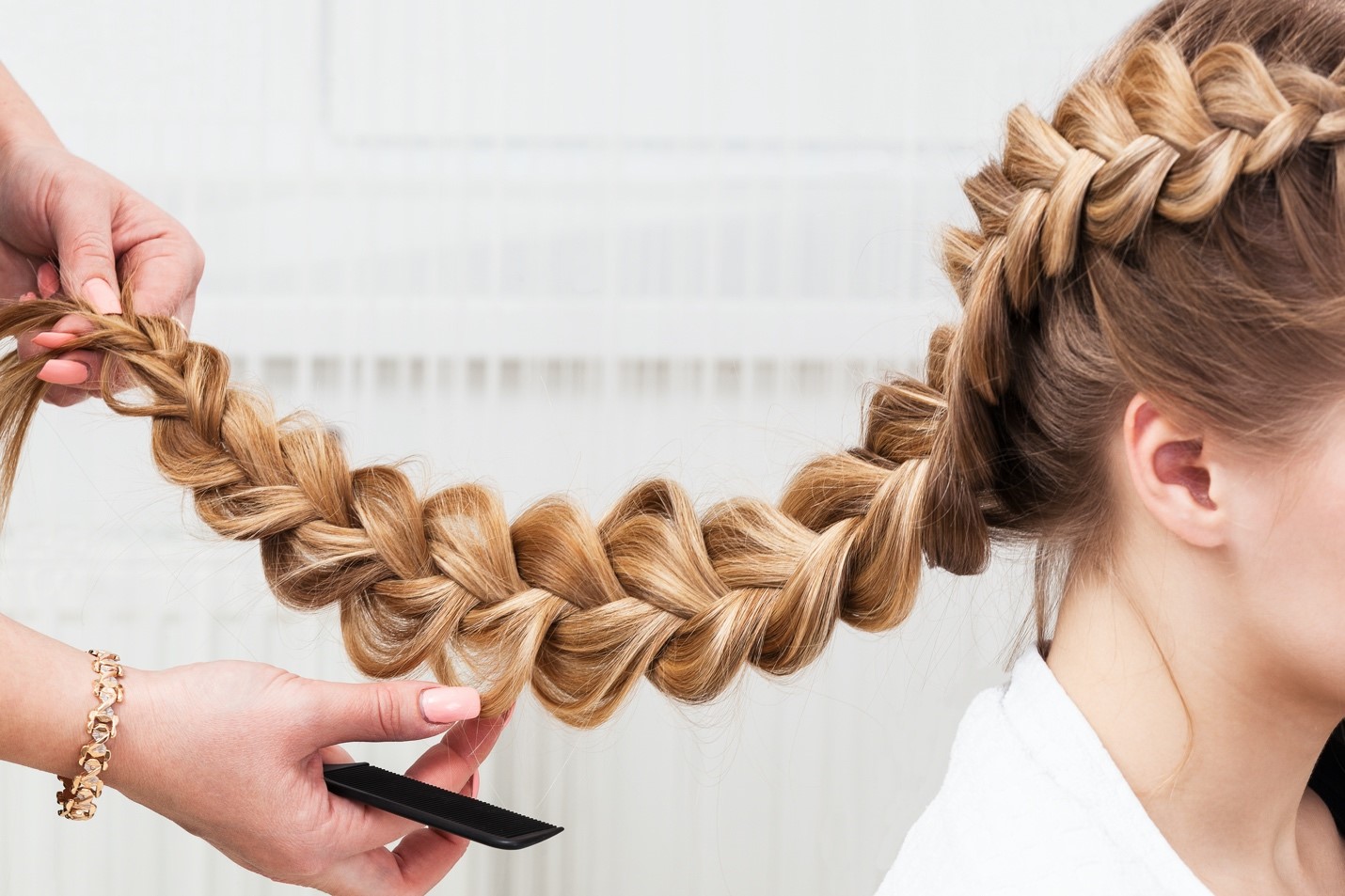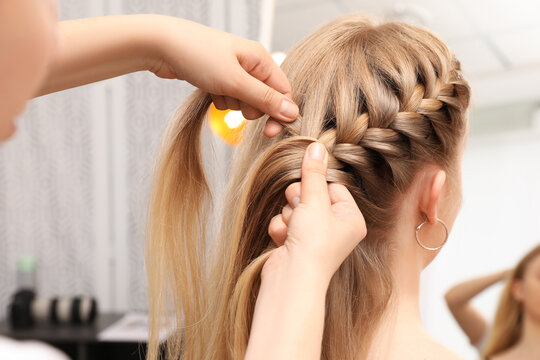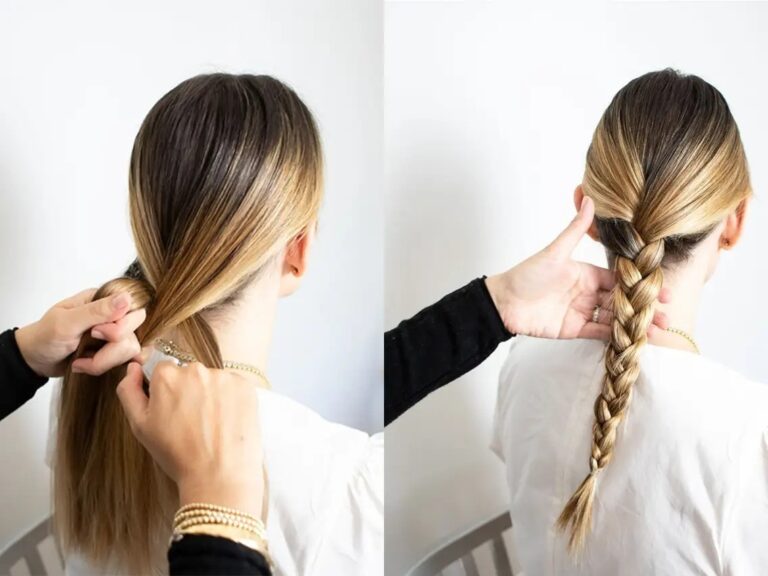Braiding hair is a timeless skill, transcending cultures and epochs and evolving into a global symbol of beauty, tradition, and style. This guide is designed to help beginners navigate the intricate yet rewarding braiding process. Whether you want to master a simple three-strand braid or aspire to more complex styles, understanding the basics is your first step towards braiding proficiency. Let’s unravel the secrets of how to braid hair, ensuring you have the foundation to explore the vast world of hair braiding.
Understanding the Basics of Braiding
Before diving into the practical steps, it’s crucial to grasp what hair braiding involves. At its core, braiding consists of interweaving strands of hair to create a cohesive plait. While there are numerous braiding styles, the three-strand braid is the cornerstone of all braiding techniques. This method involves systematically crossing hair strands over one another to form a uniform braid. Mastering how to braid hair starts with patience, practice, and a bit of skill.
Preparing Your Hair for Braiding
The key to a smooth braiding experience is in the preparation. Depending on the texture and desired outcome, start with detangled, slightly damp, or dry hair. Applying a small amount of hair product, such as a detangler or light styling mousse, can help manage flyaways and provide a smoother braid. It’s also essential to decide on the braid’s placement and thickness. For beginners, practicing with larger sections might be easier as it provides a better grip and makes learning how to braid hair less daunting.
The Three-Strand Braid: A Step-by-Step Guide
- Divide the Hair: Begin by dividing the hair into three equal sections. This is the foundation of your braid, so ensure the sections are smooth and tangy-free.
- Cross the Strands: Hold the correct section in your right hand and the left section in your left hand. Cross the right section over the middle one. Now, the initial right section has become the middle section.
- Repeat with the Left: Cross the left section over the new middle section. Continue this pattern, alternating sides and pulling gently on each strand to tighten the braid as you go along.
- Secure the Braid: Once you reach the end of the hair, secure the braid with a hair tie. You can wrap a small piece of hair around the elastic for a more polished look to conceal it.
Understanding and mastering this basic technique is essential as it forms the basis of how to braid hair, from the most straightforward styles to the most intricate designs.

Types of Braids for Beginners
After getting the hang of the basic three-strand braid, you should explore other braids. Each braid has its unique charm and complexity, but here are a few beginner-friendly styles to consider:
- French Braid: An elegant evolution of the basic braid, where you gradually add hair to each section as you braid down the head.
- Dutch Braid: Often referred to as the “inside-out” French braid, this technique involves crossing the strands under instead of over, creating a braid that pops out.
- Fishtail Braid: This braid uses two sections instead of three and transfers small hair pieces from one section to another to create a herringbone pattern.
Tips for Perfecting Your Braid
- Practice Makes Perfect: The more you practice braiding hair, the more intuitive it will become. Start with simple styles and gradually move to more complex patterns.
- Use the Right Tools: Invest in good-quality hair ties, a detangling brush, and some styling products to help manage your hair while braiding.
- Sectioning is Key: Clean, even sections are crucial for a neat braid. Use a tail comb for precise sectioning and to help smooth each section before braiding.
- Tightness: While you want your braid to be secure, braiding too tightly can cause discomfort and damage your hair. Find a balance between a firm braid and maintaining hair health.
Selecting the Right Hair Products for Braiding
Choosing the right products can significantly impact the ease of braiding and the final look. For those wondering how to braid hair with professional finesse, it begins with product selection. Lightweight mousses or sprays can add texture to silky hair, making it more manageable. For thicker hair, smoothing serums or oils can tame frizz and make strands easier to weave together. Remember, the goal is to enhance your hair’s natural texture, not weigh it down, so opt for products that offer hold without stiffness.

Understanding Hair Texture and Braiding
Different hair textures require different braiding approaches. Fine hair might need a bit of texturizing spray to hold braids better, while curly or coarser hair types benefit from a smoothing product to control frizz. Knowing how to braid hair according to your hair type can make the process smoother and result in a more polished braid. Experiment with different products and techniques to find the best for your hair’s unique texture.
Mastering Tension in Braiding
One of the keys to a perfect braid is maintaining consistent tension. This doesn’t mean pulling hair too tightly, which can lead to breakage or discomfort, but instead keeping an even pressure to ensure the braid looks neat and lasts longer. As you learn how to braid hair, please pay attention to how tightly you hold your strands and adjust accordingly. This skill improves with practice and is crucial for more advanced braiding styles.
Exploring Advanced Braiding Techniques
Exploring advanced techniques can be exciting once you’re comfortable with basic braids. Techniques such as waterfall braids, lace braids, or even four-strand braids offer a challenge and introduce intricate patterns into your hairstyling repertoire. Each advanced technique builds on the fundamentals of how to braid hair, pushing your skills and creativity to new levels. Don’t hesitate to look up tutorials or take classes to refine these advanced braiding techniques.
Incorporating Accessories into Braids
Accessories can elevate a simple braid into a statement hairstyle. The possibilities are endless, from ribbons woven into a three-strand braid to elegant hairpins adorning a French braid. As you become more adept at braiding hair, experiment with different accessories to find what complements your style. Remember, the accessory should enhance the braid, not overshadow it, so choose items that integrate seamlessly with your hairstyle.

Practicing Patience and Perseverance
Lastly, patience and perseverance are your best allies in learning how to braid hair. Braiding can be intricate and time-consuming, especially when tackling more complex styles. There will be moments of frustration, but the satisfaction of mastering a new braid is unparalleled. Celebrate your progress, no matter how small, and continue to practice. Your efforts will improve your braiding skills and encourage a creative and meditative approach to hairstyling.
Conclusion
Learning how to braid hair is a rewarding skill that opens up a world of styling possibilities. Braiding can adapt to any occasion, whether you’re aiming for a casual look or an elegant hairstyle. Remember, the journey to braiding mastery is a step-by-step process that requires patience, practice, and a willingness to learn from mistakes. With each braid you complete, your technique improves, your hands move more confidently, and your braids become more polished. Start with the basics, build on your skills, and soon, you can create beautiful, intricate braids that reflect your style and creativity.

